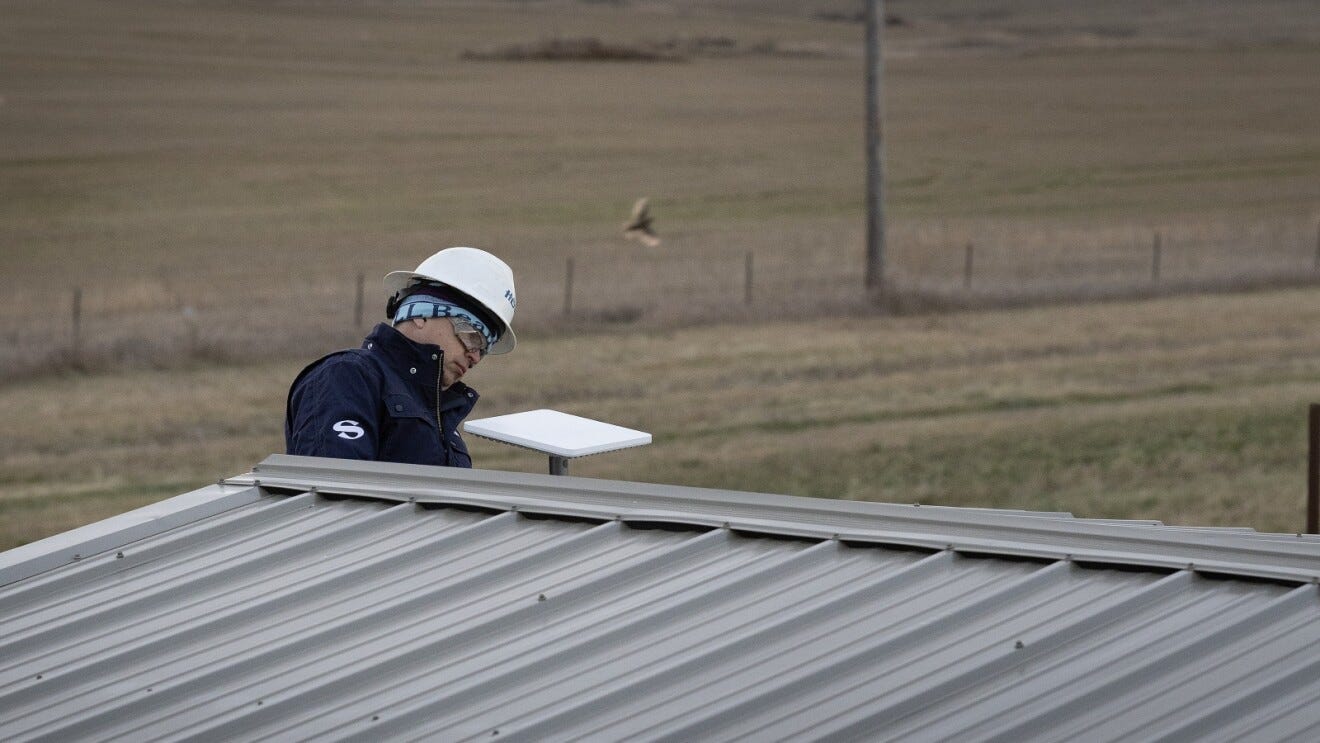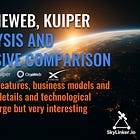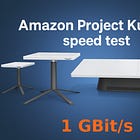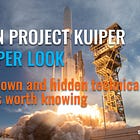Amazon LEO L1LA10 — the new router for Amazon LEO satcom terminal
What is known about the new Amazon LEO L1LA10 Wi-Fi router? Is Amazon truly preparing a rapid expansion of its Amazon LEO satellite service by betting on IoT and AWS?
Amazon has been relatively quiet but extremely persistent in pushing its satellite communication system toward public launch readiness. The project formerly known as Project Kuiper recently received a new name — Amazon Leo, and with the rebranding, the company openly stated its intention to begin offering services in the very near future. Against this backdrop, references surfaced in the media to newly published FCC materials, which for the first time allow us to see not marketing concepts, but actual user equipment.
The FCC documentation includes detailed RF tests, antenna measurements, and operational mode descriptions for the new L1LA10 router, which will serve as the indoor module for Amazon Leo customers. And from this dataset one thing becomes very clear: the company is building not just satellite connectivity, but a complete home platform with multiple layers of wireless interaction — including IoT and other modern capabilities. It looks like Jeff Bezos’ team intends to leverage every competitive advantage and surpass Elon Musk’s Starlink anywhere it is realistically possible.
What is this device?
Model: L1LA10
FCC ID: 2BKSS-L1LA10
Type: Wireless Router
Manufacturer / Applicant: Kuiper Systems LLC (Amazon)
This is not an experimental module or prototype — the FCC reports show the device undergoing a full certification cycle, confirming it is ready for production. And this is not a cheap low-power access point, but a full-scale, high-performance, multiprotocol router.
Wireless Interfaces
The L1LA10 router operates simultaneously across three radio subsystems, each tested separately: Wi-Fi, Bluetooth Low Energy, and IoT IEEE 802.15.4.
Wi-Fi
A complete stack of modern standards:
2.4 GHz: 802.11b/g/n/ax
5 GHz: 802.11a/n/ac/ax
Support for HE/VHT up to 160 MHz, critical for high throughput
DFS in U-NII-2A/2C bands (required for the “heavy” 5 GHz channels)
The L1LA10 supports all major 5 GHz ranges:
5150–5250 MHz
5250–5350 MHz
5470–5725 MHz
5725–5850 MHz
5850–5925 MHz
As a result — compatibility with any regulatory environment and proper DFS behavior. HT/VHT/HE testing is also explicitly confirmed in the FCC documents.
This is classic Wi-Fi 6 performance with no compromises. True, there is currently no 6 GHz band or Wi-Fi 6E support — but this may be easily updated in future hardware revisions. Mesh support and strong throughput potential allow Amazon to outperform many competitors right from launch.
Bluetooth Low Energy & IoT IEEE 802.15.4
A very important highlight of the L1LA10 is a separate RF subsystem for BLE and IoT, with its own dedicated antenna:
The L1LA10 features:
Full BLE implementation certified via dedicated FCC tests
Frequency: 2400–2483.5 MHz
And for IoT:
IEEE 802.15.4 support
Frequency: 2405–2480 MHz
Channels: 11–26 (classic 802.15.4 grid)
Modulation: BPSK
Thus, BLE and IEEE 802.15.4 already allow interaction with a vast majority of existing IoT solutions. Beyond BLE, this includes Thread, ZigBee, Matter (via Thread), 6LoWPAN, OpenThread, industrial IoT sensor communication (IIoT), elements of Amazon Sidewalk, and even the potential to implement custom low-power RF protocols.
Antenna System
The FCC documents provide a clear picture of the antennas installed in the L1LA10:
Wi-Fi
2× dipole antennas: Luxshare-ICT 833-00055 and 833-00056
Connectors: UFL
Simultaneous operation in 2.4 and 5 GHz
Average gain: 3–5 dBi
BLE / 802.15.4
1× dipole module: Luxshare-ICT 833-00050
Connector: IPEX
The fact that L1LA10 includes a dedicated antenna specifically labeled in the documents as “BT/ZigBee 2.4 GHz antenna” indicates that the support is hardware-embedded and not merely a side effect of the Wi-Fi chip. This is not ideal from a cybersecurity standpoint (especially if the user cannot disable it). But it is very attractive from a marketing perspective — particularly for the modern “geek audience,” and especially considering Starlink’s lack of interest in these technologies.
Factual Summary
The FCC documents confirm that the L1LA10 is far more than a Wi-Fi router for satellite internet. It is a complex multiprotocol device integrating Wi-Fi 6, BLE, and 802.15.4 in three separate radio systems with three antennas. No such comprehensive integration exists today in Starlink or any other satellite communication ecosystem.
Although the FCC documentation does not list the 5925–7125 MHz range or Wi-Fi 6E support, we cannot rule out that these omissions may be addressed in future revisions. On the other hand, the majority of Amazon’s products do not support Wi-Fi 6E — meaning its absence here may be a deliberate strategic choice.
Likely Assumptions
And here we reach the domain of assumptions — but very reasonable assumptions.
So what potential capabilities might be enabled by the onboard hardware observed in the L1LA10?
The level of built-in functionality makes the L1LA10 not only an access point but also a potential IoT hub, smart home component, and gateway for future Amazon services:
Thread Border Router
Matter Bridge
ZigBee Coordinator
It is also likely that the L1LA10 router may serve as a Sidewalk Bridge, providing internet and cloud connectivity to Amazon infrastructure for:
Echo / Echo Dot (4th gen and newer)
Ring Floodlight Camera
Ring Spotlight Cam
Certain Eero models
Other Amazon devices with BLE / 802.15.4 / LoRa
But that’s not all. Since typical 2.4 GHz ZigBee uses O-QPSK, the presence of BPSK capability suggests that Amazon may use it for proprietary communication protocols with other devices — possibly for telemetry, diagnostics, or operational data exchange.
The support of paid subscribers of SkyLinker.io will allow us to share even better and even more independent analytics, interesting reviews, and produce training and educational materials. From an inexpensive subscription costing a few cups of coffee per month to a more significant “Patron” level — all of this is clearly and qualitatively converted into information and knowledge, primarily for the defenders of Ukraine.
All the most interesting things from the world of communication and space technologies are also available in the form of educational audio podcasts and video lectures both on the website and on the SkyLinker Youtube channel.






